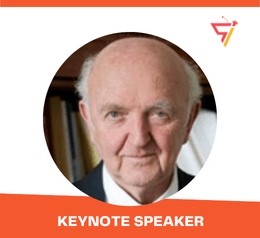Scholars International Conference on
Optics, Photonics and Lasers
THEME: "Frontiers in Optics, Photonics and Lasers Research"
 22-24 Jun 2022
22-24 Jun 2022  NH Potsdam | Berlin, Germany & Online
NH Potsdam | Berlin, Germany & Online THEME: "Frontiers in Optics, Photonics and Lasers Research"
 22-24 Jun 2022
22-24 Jun 2022  NH Potsdam | Berlin, Germany & Online
NH Potsdam | Berlin, Germany & Online 
Wigner Research Center of Physics, Hungary
Title: Femtosecond laser assisted high field plasmonics (room temperature Cooper pairs and transmutation)
Prof. Dr. Norbert Kroo, Past Secretary General and Vice-President of the Hungarian Academy of Sciences (HAS), member of the Scientific Council of the European Research Council and director of the Research Institute for Solid State Physics and Optics of HAS. Honoris Causa Professor Doctor of the Roland Eotvos University (H). Former president of the European Physical Society and member, honorary member or doctor of several distinguished scientific institutions and universities. Some decorations : Alexander von Humboldt Research Prize (D), Wallis E. Lamb Award for Laser Physics and Quantum Electronics (USA), Commander of the Order of the Lion Award (Finland), Middle Cross with the Star Award Hungary (H), Charles Hard Townes Distinguished Lecturer Award (US), Hungarian Prima Primissima Prize for Science, Honorary Member of the European Physical Society and Institute of Physics (UK). Adviser of several international and national research institutions.His research fields: neutron physics, laser physics and quantum optics, plasmonics.
The performance of femtosecond pulsed lasers has been significantly improved in the last few years, opening a broad spectrum of potential (also high field) applications. The present lecture presents two surface plasmon related examples to demonstrate this development.
The first illustrative set of experiments used laser intensities up to 1012 W/cm2. Surface plasmons were resonantly excited by femtosecond laser pulses on gold films at room temperature. Measuring the response of a surface plasmon near field scanning tunneling microscope (STM) to the short pulse excitation of the plasmons, laser intensity dependent anomalies were found in both the temporal response and magnetic field dependence of the STM signal with resonance around ~80 GW/cm2. The analysis of the experimental data indicates the formation of Cooper pairs and the Meissner effect has also been observed in this intensity range. Surface plasmon assisted electron emission has also been studied on the same gold films and with the same laser. A time-of-flight electron spectrometer has been used to measure the energy spectra of these electrons. Anamaly in these spectra has also been found in the same laser intensity range where the STM measurements have found it, confirming the formation of Cooper-pairs.
Our second set of experiments covered a laser intensity range up to 1017 W/cm2 and the target was a transparent polymer, with resonant gold nanoparticles embedded into it. The aim was to transmute an as large as possible part of the hydrogen atoms of the polymer into deuterium, by exploring the field amplification effect of the localized plasmons on the gold nanoparticles. Different techniques have been used for deuterium detection, namely LIBS, Raman and infrared spectroscopy, each proving the order of magnitude increase of the deuterium concentration due to transmutation.
The theoretical explanation of observations in both cases is also briefly described in the lecture.